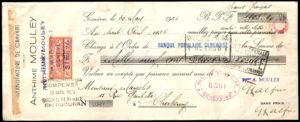AN INTRODUCTION TO BILL OF EXCHANGE
When one is reading about cheques or how to file cheque bounce case it is also necessary to read about bill of exchange.
A bill of exchange is a written instrument which binds a party to pay a fixed amount of money to another party either on demand or on a pre -determined date. It is a type of negotiable instrument which directs the payee of the bill to pay the fixed amount to the drawee. It acts as a proof of indebtedness of the drawer to the drawee. They are used in international business and transactions. Especially transaction which involve a period of credit. It is defined under Section 5 of the Negotiable Instruments Act, 1881. But, fortunately, we are not here to just state the legal definitions and confuse our readers but to explain it in a simple manner.
To read more about cheques and how to file cheque bounce case you can read here.
BILL OF EXCHANGE VERSUS CHEQUES
Unlike a cheque where the amount becomes payable to the drawee at its presentation, a bill of exchange usually allows a three-day grace period. It is a proof of business transaction between the buyer and seller and therefore when any dispute occurs the bill of exchange can be presented in court of law. It contains all the terms and conditions of the payment. These terms are:
a) Amount payable
b) Place
c) Date of payment
d) Interest.
It is not compulsory to present the bill of exchange only on the maturity date. Therefore, there is another positive to bills of exchange.
The bills can be discounted by the bank if there is an emergency. Thereby meaning, holder can access the funds before maturity. The bank will charge a percentage of commission for the same.
It has to be accepted by the person on whom it is drawn or must be accepted by some person on his behalf. Consequently, after acceptance, it is considered as a bill of exchange otherwise, it is merely a draft. Hence, you can see the differences more clearly from the above.

BENEFITS
Bills of exchange are valueable in business. It is possible to transfer the same to anyother person. As a result, it promotes credit sales and credit purchases.
Thus, as clear from the above, every bill of exchange must contain the following information-
- Name of the drawer of the bill, the payee (or his order) and the drawee.
- It must always constitute a valid consideration since there are no legal agreements without a valid consideration.
- Mention the amount in both figures and words.
- There should be no vagueness with respect to the same and the order to pay has to be unconditional.
- Date of making.
- Mention the date on which it reaches maturity plus three day grace period.
- Requires sign of drawer.
- Stamp.
- Mention the terms and conditions agreed upon.
Therefore, a draft turns into a bill of exchange only upon fulfilling the above conditions. To get in-depth legal advice on any pending payment in regard to a negotiable instrument from a cheque bounce lawyer read here.
